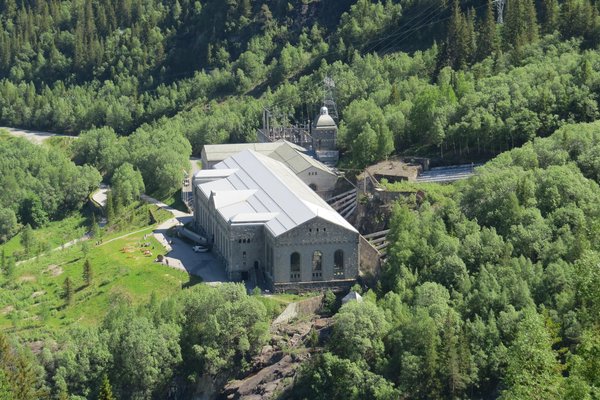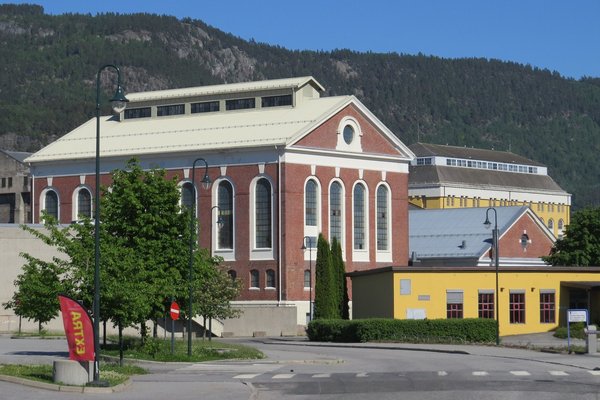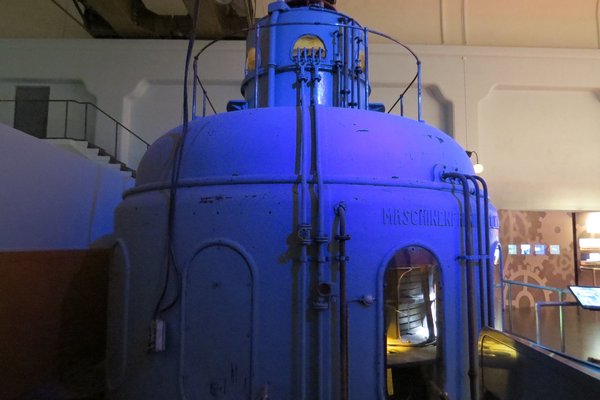Norway
Rjukan / Notodden
The Rjukan / Notodden Industrial Heritage Site covers a former production complex that used revolutionary hydroelectric power plants in the Måna River and its waterfalls.
The complex was established by the private Norsk-Hydro company in the early 20th century to produce hydroelectricity and manufacture artificial fertilizer. It used the natural topography to generate the large amounts of power needed. The site includes both the technological components such as dams, tunnels and power plants, and the company towns of Rjukan and Notodden.
Community Perspective: located in a beautiful Norwegian landscape, but the site itself can be a bit hard to grasp and covers a stretch of some 80km. Juha recommends walking along the river Måna all the way from Rjukan to Vemork power station and Rjukanfossen waterfall.
Site Info
Official Information
- Full Name
- Rjukan / Notodden Industrial Heritage Site (ID: 1486)
- Country
- Norway
- Status
-
Inscribed 2015
Site history
History of Rjukan / Notodden
- 2015: Inscribed
- Inscribed
- Type
- Cultural
- Criteria
- ii
- iv
Links
- UNESCO
- whc.unesco.org
- Official
-
- industriarven.no — Rjukan Notodden industriarv
- Related
-
- visitrjukan.com — Vemork Museum
All Links
UNESCO.org
- whc.unesco.org — whc.unesco.org/
Official Website
- industriarven.no — Rjukan Notodden industriarv
Related Resources
- visitrjukan.com — Vemork Museum
Community Information
- Community Category
- Secular structure: Factories and industry
Travel Information
Recent Connections
-
European Route of Industrial Heritage
-
Perfect Inscriptions
2015 -
Nuclear power
"Germany took over Rjukan’s facilities …
Connections of Rjukan / Notodden
- Geography
- History
-
-
Second World War
The Norwegian heavy water sabotage was a series of Allied-led efforts between 1940 and 1944 to halt German heavy water production via hydroelectric plants in Nazi Germany-occupied Norway during World War II, involving both Norwegian commandos and Allied bombing raids. During the war, the Allies sought to inhibit the German development of nuclear weapons with the removal of heavy water and the destruction of heavy-water production plants. The Norwegian heavy water sabotage was aimed at the 60 MW Vemork power station at the Rjukan waterfall. (wiki)See en.wikipedia.org
-
- Ecology
-
-
Saltpeter
"Rjukan was formerly a significant industrial centre in Telemark, and the town was established between 1905 and 1916, when Norsk Hydro started saltpetre (fertilizer) production there. " (wiki)
-
- Architecture
-
-
Garden City Movement
Notodden: "The housing layout reflects garden city ideals ..." (AB ev) -
Art Nouveau
During the period after 1905, around 40 tenements/buildings were built that formed the basis for naming Notodden centre the Art Nouveau town (nom file) -
Brick architecture
brick Boiler House at Rjukan
-
- Damaged
-
-
Damaged in World War II
Germany took over Rjukan’s facilities during WWII and built installations to produce heavy water shipped to Germany for use in controlling nuclear fission. Rjukan consequently became the focus of sabotage attacks by the Allies (AB ev)
-
- World Heritage Process
-
-
Perfect Inscriptions
2015 -
First sites filling gaps cited by ICOMOS
electric energy (2015)
-
Reduced from broader TWHS
Used to include Odda/Tyssedal
-
- Human Activity
-
-
Nuclear power
"Germany took over Rjukan’s facilities during WWII and built installations to produce heavy water shipped to Germany for use in controlling nuclear fission." (AB ev) -
Boats
Railway steam ferries, now at Railway museum at Vemork
-
- Constructions
-
-
Suspended cable cars
Krosso Aerial Cableway / 1928 / "a gift from Norsk Hydro to the people of Rjukan (most of them Hydro employees), offering them a view of the sun which is obscured by the surrounding mountains during the winter months from October to March" (wiki)See en.wikipedia.org
-
Railways
two railways lines -
Hydro Power Stations
"The Rjukan-Notodden Industrial Heritage Site comprises a cluster of pioneering hydro-electric power plants, transmission lines,....." (UNESCO) -
Pumping Stations
Rjukan: "Some of the town's waterworks buildings also remain, including the pressure reservoir and pumping station." (nom file) -
Lighthouses
10 of the original 11 lighthouses along Tinnsjøen Lake (1908/1939/1962) (AB ev)
-
- WHS on Other Lists
- Timeline
-
-
Built in the 20th century
Three of the pioneering power plant buildings (Vemork, Såheim and Tinfos II) constructed between 1905 and 1940 are intact and still in use. (AB ev)
-
- Literature & Film
-
-
Location for a classic movie
The Heroes of Telemark (1965)See www.thelocal.no
-
News
No news.
Recent Visitors
Visitors of Rjukan / Notodden
- Adam Hancock
- Afshin Iranpour
- Alexander Lehmann
- Argo
- Astraftis
- Bin
- Birgitte Sørensen
- Claire Bradshaw
- ctravel
- Dan Pettigrew
- Dimitar Krastev
- Dirk-pieter
- Els Slots
- Errol Neo
- Frederik Dawson
- Gary Arndt
- George Gdanski
- GeorgeIng61
- Gjert
- HaraldOest
- Harald T.
- Harry Mitsidis
- hegeline@icloud.com
- Ingemar Eriksson
- Ivan Rucek
- janem
- Jan-Willem
- Jarek Pokrzywnicki
- Jay T
- Jezza
- Joel on the Road
- Jonas Hagung
- Jonas Kremer
- Jonas Martinsson
- jonathanfr
- Juha Sjoeblom
- KarenBMoore
- Karito Vies
- Kasia M.
- Kbecq
- Knut
- Lars Bogstad
- Lazerway
- Luboang
- Luis Filipe Gaspar
- Maja
- Marie
- Martina Rúčková
- Mikko
- Miloš Tašković
- MMM
- nan
- Palimpsesto
- Patrik
- Philipp Leu
- Philipp Peterer
- Ralf Regele
- Randi Thomsen
- Roger Ourset
- Roman Raab
- sandersx2
- Schnitzel
- Shandos Cleaver
- Slavi
- Stefan Loov
- Svein Elias
- Szucs Tamas
- Taotao Chen
- Tarquinio_Superbo
- Thomas Buechler
- Thorben
- Tom Flaten
- Truls Brekke
- Tsunami
- WalGra
- Wojciech Fedoruk
- Wo_ko
- YaroMir
- Zoë Sheng
Community Reviews
Show full reviews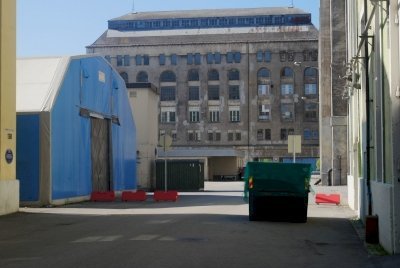
While humans have put manure of fields for millenia, it was never fully understood why that actually worked. It was in the 19th century that a German chemist, Justus von Liebig, showed the benefits of plant nutrients; he is referred to as the "father of the fertilizer industry". The initial fertilizer used in the 19th century was guano which had to be imported from South America and which had limited availability. So, plenty of researchers were looking for a way to produce fertilizers instead of mining them.
At the beginning of the 20th century a Norwegian chemist, Kristian Birkeland, developed a process, the Birkeland-Eyde Process, named after him and his business partner, Sam Eyde. The process required loads of energy and they set about to use hydropower to commercialize it. The first factory was at Notodden close to a hydropower plant. A company town grew around it. Eventually, the energy consumption exceeded what was available at Notodden and production was shifted up into the mountains to Rjukan where more hydropower was available. In the process, the whole landscape between Notodden and Rjukan was transformed. A railway including a rail ferry had to be built, several factories, a company town, hydropower plants... The scope of the business venture is mind boggling. In the end, though, the Birkeland-Eyde process fell out of use. The Bosch-Haberer process required less energy and is what is in use nowadays.
I had the pleasure to have Randi and Svein take me to …
Keep reading 0 comments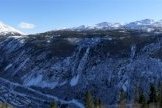
The site focuses on the production of fertilizers by using hydro energy. At the core of this site are the Norsk Hydro production- and power plants, but also the Rjukan and Notodden company towns and the transport system between both towns (rail and ferry).
This probably isn’t a site that will appeal to many but because of mr. Kbecq’s professional interest in this industry we couldn’t visit Oslo without also visiting Rjukan and Notodden. We hired a car in Oslo and although it was winter (March) we made it to Rjukan without problems.
In Rjukan we first visited the Vemork power plant, a couple of kilometers outside Rjukan, which now houses the Industrial Workers museum. Despite the name, the museum mainly focuses on the heavy water production (for nuclear weapons) sabotage by the Norwegian resistance during WW II. The movie ‘The Heroes of Telemark’ (1965, with Kirk Douglas) is about these events and also shows the rail / ferry transports.
Afterwards, we went to the centre of Rjukan and walked along the river where all the production facilities are located. Since most facilities are converted to office buildings, there is not that much to see but the location in the valley is nice. The building that stands out most is the Såheim power plant.
Our day ended with a ride on the Krossobanen (cable car) to the Hardangervidda plateau. From here, you have a magnificent view on Rjukan / the valley and on the Gaustatoppen mountain …
Keep reading 0 comments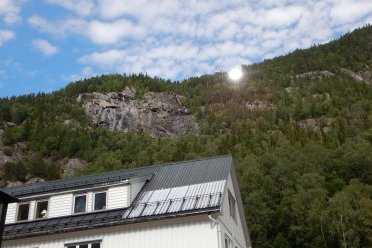
I visited this site in August 2015, together with a friend who lived in Norway then, and I haven't much to add to Els's review about the WHS itself.
But if you haven't seen it, watch the tv-series The Heavy Water War (Kampen om Tungtvannet) (shortly) before going there. Of course, it's dramatised and not 100% accurate, but it's a nicer way to understand what happened here in WW2 than the museum can show you. It'll help you to breathe in the region's history when you're walking in the valley or across the hills. Perhaps that's what made me give it the extra half star.
(The picture is showing the Sun Mirrors that Els already mentioned; funny enough of it's own to watch from a nice terrace below.)
Keep reading 0 comments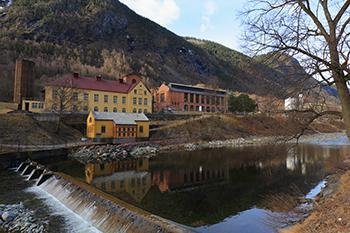
Site visited April 2017. Rjukan – Notodden industrial heritage site is located in the beautiful Norwegian landscape. Sometimes I found the landscapes more interesting than the industrial values. This site needs a bit of background research to really understand it.
There are plenty of industrial sites around Nordic countries. Some of them have been inscribed already: Falun, Engelsberg, Røros and Verla. The first question I had, what makes just this site worth of World Heritage status? What qualities it has that the other uninscribed Nordic industrial sites don’t have?
I had a business trip to Oslo so I decided to make a short side trip to Rjukan and Notodden after my duties. I travelled to Rjukan by bus. The trip took 3,5 hours. I stayed overnight in a small hostel just beside the river and Såheim power plant.
It was a sunny spring morning when I started to explore the city of Rjukan. The first thing I noticed already the previous night was nearby Såheim power plant with its robust grey stone exterior and towers. It is impressive especially during night when it is beautifully lit. It was a nice weather so I decided to walk along the river Måna all the way from Rjukan to Vemork power station and Rjukanfossen waterfall. The trip by foot takes about an hour. Along the route there are lots of original factory buildings from the early 20th century. Lately some of them have been converted to offices and workshop spaces. I think Vemork …
Keep reading 0 comments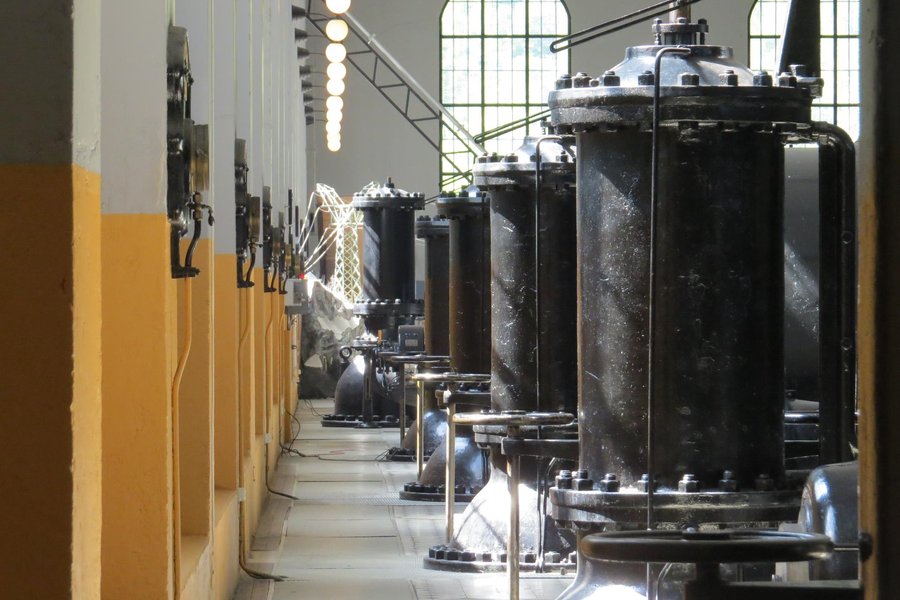
Rjukan/Notodden Industrial Heritage Site was added to the World Heritage List last year. It’s a niche site that very few will have visited before its designation - our visitor count currently still stands at a modest 17. It’s also one of the clearest examples of under-represented cultural properties brought forward by the Filling the Gaps study of ICOMOS (2005): a ‘developing technology’ related to ‘energy conversion and utilization’. At Rjukan/Notodden, hydro energy was created using the natural power of waterfalls and rivers.
Of course, I had done my usual preparations: reading the ICOMOS review and the nomination dossier, plus some additional Googling on certain subjects. But I had difficulty grasping what this WHS exactly involves. What will follow is a reconstruction that hopefully will provide a starting point for future WH travellers.
First of all, this is a linear WHS. It covers the flow of the water downhill via two rivers and a lake, plus the railway tracks and the land in between that run parallel to the water. The core zone is 93km in length and stretches between the towns of Rjukan and Notodden. Rjukan lies a little over 3 hours west of Oslo Airport. The E37 road runs parallel to the river and railway. It is an easy and quiet route to drive (there are also buses).
While driving, I was constantly on the lookout for 'something industrial' - this is an industrial WHS after all. What you get, though, is the quintessential Norwegian landscape with dark blue …
Keep reading 0 comments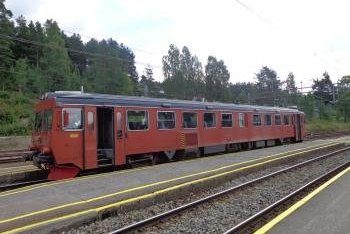
I visited this site in August 2012. I took a train from Nordagutsu through Hjuksebö to Notodden to visit the largest stave church in the world on my way back to Oslo on the same day.
The railway between Hjuksebö and Notodden is supposed to be part of the World Heritage Site and is apparently still in use. I happened to take this photo of the train on the railway because I thought it was cute.
Keep reading 0 comments
